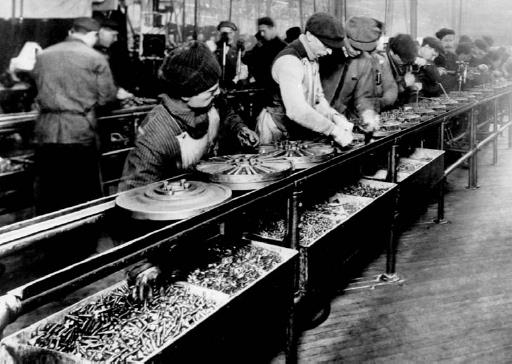Economics and BusinessAssembly Line |
Why was Ford’s Model T important? |
The enormous success of the Model T, a Ford Motor Company car introduced in 1908 and manufactured until 1927, has been the source of extensive analysis and commentary by historians, sociologists, economists, business writers, and pop culture experts. The Model T has been credited with not only changing America but with defining it. When Ford Motor Company founder and president Henry Ford (1863–1947) unveiled the prize Model T in October 1908, he hailed it as “a motor car for the great multitude.” The product lived up to the promise. The internal combustion vehicle had been in production in the United States only since the 1890s, but in the decade preceding the Model T’s debut, manufacturers and consumers alike had come to regard the “horseless carriage” as a luxury item, custom made for wealthy Americans. Ford had conceived of a different and, as the company would advertise throughout the century, a better idea: A car that was simple to operate, easy to service, comfortable, and affordable.
The Model T had a wooden body on a steel frame; four-cylinder, 20-horsepower engine; tank capacity of 10 gallons (in the “touring sedan”) or 16 gallons (in the “run-about”); and a completely enclosed power plant and transmission. It was also lighter than other models. Through large-scale production, based on a system of interchangeable parts, the Model T took 728 minutes (just more than 12 hours) to build and sold for $850, lower than the price of other automobiles, but still beyond the reach of the average American. Nevertheless, 17,000 Model Ts were bought by American consumers the year they were introduced. Ford improved production methods to realize greater economies and lower the price each year; sales steadily rose. The company raised eyebrows in the business community when it offered workers an eight-hour day for $5 a day—twice what other factory workers were earning. Ford explained that this was merely good business practice. By raising the wages of his factory workers, Ford enlarged the potential market for his Model T.
In 1914 Ford implemented the moving assembly line. It used the principles of scientific management, where each job has one “best way” of being accomplished, to bring unprecedented efficiency to manufacturing. Assembly time per car dropped to just 90 minutes. That year the Ford plant in Highland Park, Michigan, produced almost 250,000 Model Ts. To keep up with ever-rising demand, operations were sped up and capacity increased to the point that one day in 1925, Ford produced one Model T every 10 seconds. That year the car retailed for just $295, making the so-called “Tin Lizzie” (or the “Flivver”) accessible to working-class families. By 1927, when Ford retired the Model T so the company could respond to consumer demand for cars with better performance, power, and styling, the company had turned out 15 million Tin Lizzies. Ford’s innovative Model T, a reliable, no-nonsense, mass-produced automobile, manufactured on a moving assembly line, brought mobility within the reach of the average American. It had changed consumer mind-set to view the car as a necessity.

